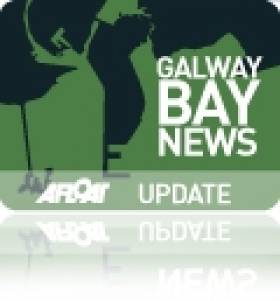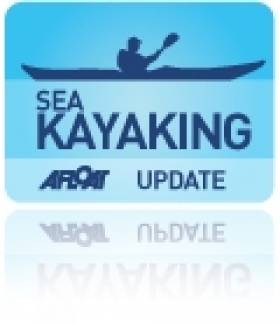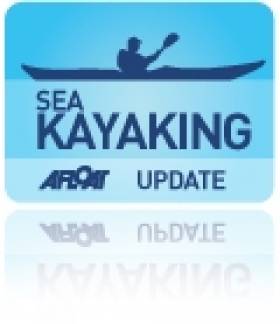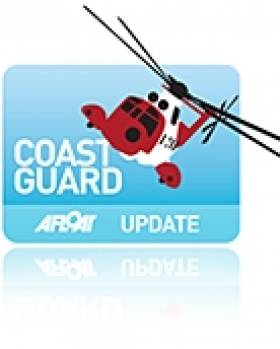Displaying items by tag: kayak
New Ocean Centre to Open in Galway
The centre will provide facilities for all the watersports organisations in the city and region and is located in the new Galway Harbour Enterprise Park adjacent to the new harbour slipway that was built specifically for the Volvo Ocean Race in 2009. The 25,000 sq ft premises is being provided by Cold Chon (Galway) Ltd for a nominal rent and the land is being provided free by Galway Harbour Company.
Some of the clubs that have already committed to this new facility include the Galway Sea Scouts, Galway Sea Sports Association, Galway Sub Aqua Club, Bádoiri an Cladaigh, OYTI, Galway Coastal Rowing, Kayak Mor and Galway Bay Sailing Club.
'The Harbour Company is pleased to assist in pulling together the various water sport bodies under one roof and in the heart of the harbour. The new facility and the recently constructed slipway will be the focal point for Galway's marine leisure, getting Galwegians afloat and established in the city, commented Harbour Master', Captain Brian Sheridan.
The Centre is also hosting Let's Do It Global which ran the very successful Green Dragon campaign and the Galway Volvo Ocean Race Festival. The team is now working towards hosting a spectacular finish to the Volvo Ocean Race 2011-12 in July 2012.
The centre will provide operational facilities such as offices, changing rooms and storage facilities. There will be no social amenities or bars at the centre however it is anticipated that the establishment of the centre will provide impetus for attracting further watersport events to Galway.
The launch will take place at The Galway Ocean Sports Centre, Galway Harbour Enterprise Park, Galway City.
Search for Missing Kayaker Ends After Women's Body Recovered
The search from Lleyn to Morfa Nefyn, Fort Belan and Llanddwyn involved RNLI all weather lifeboats from Holyhead and Porth Dinllaen, two helicopters from the RAF at Valley together with a North Wales Police helicopter and Coastguard Rescue Teams from Aberdaron, Porth Dinllaen and Llandwrog. It resumed after a red Avocet kayak, like the one used by missing female kayaker, was found on the beach at Morfa Nefyn on the Lleyn peninsular this morning.
Search Resumes After Missing Kayak Located
Early this morning a red Avocet kayak answering the description of the one used by missing female kayaker, Elizabeth Ashbee, a member of Shrewsbury Kayak Club, was found on the beach at Morfa Nefyn on the Lleyn peninsular. There is no apparent damage to the craft. It has now been confirmed that the craft was the one being used by Ms Ashbee.
The North Wales Police were informed who have now inspected the vessel and the maritime search and rescue operation has now resumed. The family of the missing woman has been informed.
Holyhead RNLI all weather lifeboat was asked to resume its search, and two helicopters from the RAF at Valley together with a North Wales Police helicopter are conducting a shoreline search in Caernarfon Bay, particularly from Lleyn to Morfa Nefyn, Fort Belan and Llanddwyn.
Coastguard Rescue Teams from Aberdaron, Porth Dinllaen and Llandwrog are also engaged in searching the coastline in the Bay.
Holyhead Coastguard have been broadcasting pan signals into area alerting shipping to the resumed search.
The weather on scene is a slight sea, with good visibility and south westerly winds of between 10 – 12 knots.
Ms Ashbee, wearing a dry suit and a buoyancy aid went missing Sunday afternoon in her kayak in poor weather and was last seen heading through rocks at Ynys Feurig, or Starvation Island, close to Rhosneigr. An area of up to 60 square miles has now been covered in the search.
Members of the Shrewsbury Kayak Club have also arrived on scene and are assisting Coastguard units in the search.
Kayaker recovered off Traeth Mawr
At 12.00 noon yesterday Holyhead Coastguard on the Irish Sea received a 999 call from an Aberffraw resident reporting that a woman had come to her house and asked that the Coastguard be alerted to a person in difficulty off Traeth Mawr. The person’s craft had capsized but no further information was forthcoming.
Whilst still gathering initial information, Trearddur Bay RNLI Lifeboat, RAF Rescue Helicopter 122 and Rhosneigr Coastguard Rescue Team were sent to the scene.
Shortly afterwards the helicopter reported that they were recovering a person from the water who they would be taking to Ysbyty Gwynedd, Bangor.
It seems that the 33 year old man had been in a kayak which had capsized off Traeth Mawr. Due to the strong ebb flow from Aberffraw Estuary he could not reach the shore safely. The helicopter crew advised that there was no evidence that the man had been wearing a lifejacket or buoyancy aid.
Jim Paton, Holyhead Rescue Coordination Centre Manager says:
“Sadly, the kayaker was later confirmed as deceased. We would recommend that anyone undertaking these kinds of activities wears a buoyancy aid"



























































